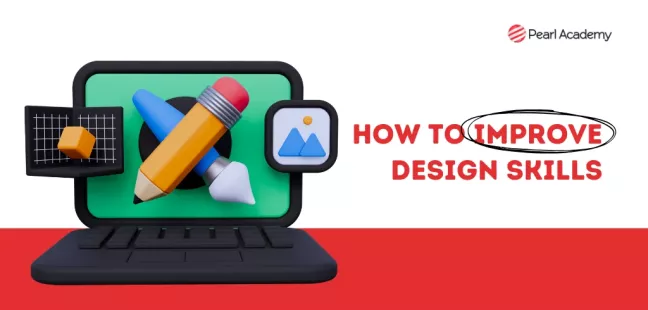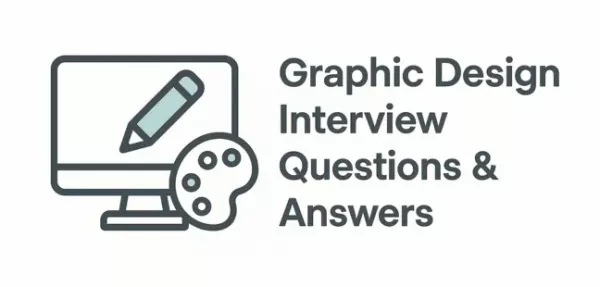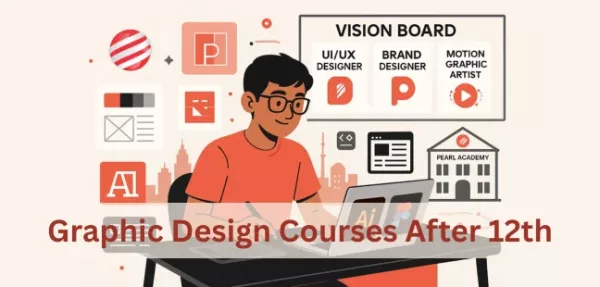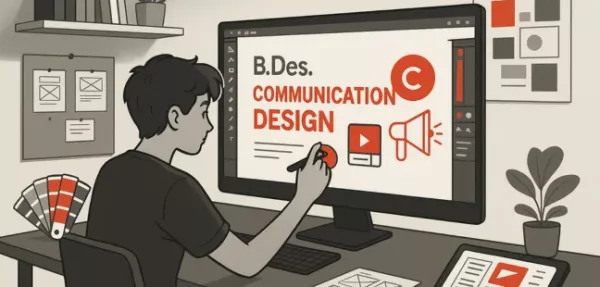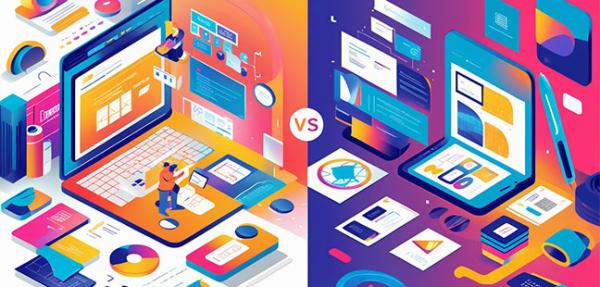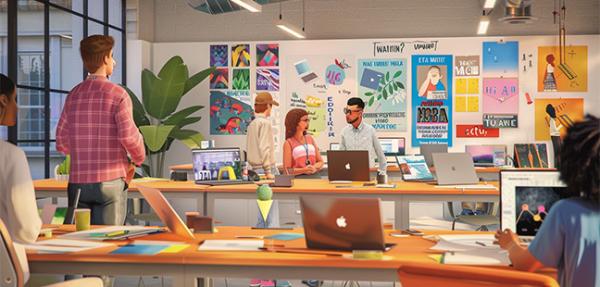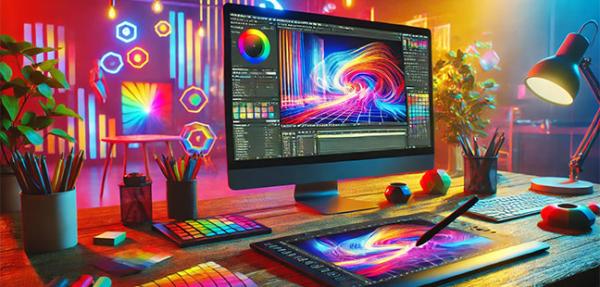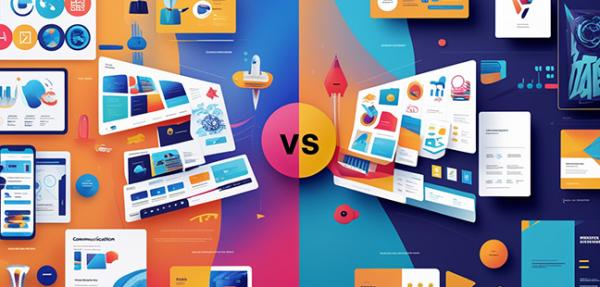5 Essential Skills Every UI/UX Designer Needs to Succeed
- Editorial Team
- Published 27-Apr-2025

The credit for creating seamless user experiences across websites and apps goes to talented UI UX designers. Whether you're designing a mobile application or an e-commerce platform, you need the skills of UI UX designers to craft intuitive, engaging, and user-friendly digital products.
Those interested in building a career in UI UX design, must develop industry-relevant skills to carve a niche for themselves around the globe. Good for you, you are at the right place! From user research to visual design, this blog lists the top five skills every UI/UX designer needs to succeed.
Become future-ready with our Communication Design Programs
Know MoreWhat is UX UI Design Meaning?
A UX UI Design meaning is a combination of user interface (UI) and user experience (UX) design that focuses on creating a product or service that is easy to use and visually appealing. The panels, buttons, toggles, icons, and other visual components that you interact with when using an app, website, or electronic device are referred to as user interfaces (UI).
All your interactions with a product, including your feelings about them, are referred to as user experience (UX). Although there is little doubt that UI may influence UX, the two are different, as are the functions of designers.
Role of UI Designer
A UI Designer is responsible for creating the graphical portions of mobile apps, websites, and devices, or sections customers directly interact with. The job of making customers’ journey in an app or website seamless, easy, and visually appealing, falls on the broad shoulders of a UI designer.
5 Essential Skills Every UI Designer Needs to Succeed
Listed below are the essential skills a UI Designer must possess to build a strong resume and a professional presence.
1. Visual design (colour theory, typography, iconography)
A UI designer must have a knack for choosing colours, fonts, and icons that enhance the interface Choosing the right colour palette, helps set the right mood, while typography ensures readability and aesthetics. Designing effective icons for intuitive navigation helps reduce the reliance on text-based explanations.
👉 Read more about how to apply these principles in How to Master Visual Communication
2. Layout principles and grid systems
A well-structured layout ensures that elements are positioned in a way that enhances usability. Grid systems help maintain consistency across different screens and resolutions, making the design visually cohesive and user-friendly.
3. High-fidelity prototyping and mock-ups
Before the product goes live and final, it needs to be sent for testing. UI designers must have the skills to create high-fidelity prototypes. This allows for thorough testing, feedback before implementation, and a clear idea to the stakeholders of what the final product will look like.
4. Branding and consistency
UI Designers must follow a uniform UI design language to establish a consistency in colours, fonts, layout, language, and more to enable the brand to have a unique voice of its own.
5. Interaction design (micro-interactions, animations)
Micro-interactions enhance user engagement by providing subtle feedback, like button hovers, loading animations, or success notifications. Thoughtful animations make interactions more intuitive and guide users effortlessly through the interface.
Together, these skills help build the perfect UI design that caters to the unique brand voice and message. Now that you know the skills you need to develop to succeed as UI designer, let us move on how to develop these skills.
How to Build these Skills
Online learning tools and platforms can be of great aid when it comes to learning and mastering UI Designs. Take courses on UI design using Figma, Sketch, or Adobe XD. Platforms like Dribbble and Behance have plethora of successful UI design examples on them. You can always refer to them for ideas and analysis.
When it comes to mock-ups, high-fidelity prototypes, and responsive designs, practise makes a man perfect! Try your hands on making them as often as possible. To build a stronger and impressive resume as a UI designer, learn design systems like Google Material Design and Apple’s Human Interface Guidelines.
Role of UX Designer
A customer’s experience and journey matter a lot when it comes to making a successful product. The user's experience with a product is the main emphasis of UX designers' work. Creating things that are useful, affordable, and pleasurable to use is the aim.
5 Essential Skills Every UX Designer Needs to Succeed
UX (User Experience) design is about creating a seamless, user-friendly experience by understanding behaviour, conducting research, and optimizing usability. Let’s delve into detail the skills required to do the job well:
1. User research (surveys, interviews, persona creation)
User research involves understanding user needs, pain points, and behaviors. Techniques include surveys, interviews, and focus groups to gather qualitative and quantitative data. Creating user personas helps design teams develop products that cater to target users.
2. Information architecture (content structuring, navigation)
This refers to organizing and structuring content logically for easy navigation. Proper hierarchical structures, sitemaps, and wireflows ensure users can find what they need without confusion, improving usability and engagement.
3. Wireframing and prototyping (low and high-fidelity)
Wireframes are basic sketches outlining page layouts, while prototypes are interactive mock-ups simulating real user experiences. Low-fidelity wireframes focus on structure, while high-fidelity prototypes provide detailed visuals and interactivity for testing before development.
4. Usability testing and A/B testing
Usability testing helps designers evaluate how easily users can interact with a product by observing them in real-time. A/B testing compares different design versions to determine which performs better based on user behavior and engagement metrics.
5. Interaction design and accessibility compliance
Interaction design focuses on how users engage with digital elements, ensuring smooth and intuitive interactions. Accessibility compliance follows WCAG (Web Content Accessibility Guidelines), ensuring usability for people with disabilities, including screen reader support and color contrast considerations.
These abilities work together to create the ideal user experience that supports the distinct brand marketing and uniqueness. Let's move on to how to build the abilities you need to succeed as a UX designer now that you are aware of them.
How to Build these Skills
You should take the help of Axure, Balsamiq, or Figma to practice wireframing and prototyping. Going to design thinking workshops is an effective way to hone the required UX design skills. Try to work on real-life projects. Take on as many real-world case studies as possible.
Since your job is to eliminate any customer’s discomfort on his journey, conduct user testing and create user journey maps. Learn UX research methods from reliable sources. By following these steps, you can ace your game as a UX designer.
Pursuing B.Des/M.Des in Communication Design: The Best Learning Path
Future UX UI designers can choose Peral Academy’s Bachelor of Design (B.Des) or Master of Design (M.Des) in Communication Design as the perfect platform to develop their skills and gain deep insights into the world of UX UI designing. These programs offer a structured curriculum that covers everything from graphic design principles and UX/UI design to animation and digital storytelling.
What you’ll gain
- Hands-on experience: Real-world projects and internships to build your portfolio.
- Skill development: Master the technical, creative, and critical thinking skills needed in the design industry.
- Dynamic Learning Space: Solidify your learnings with Design Lab, Virtual Protection Lab, and Tech Lab for the ultimate education possibilities.
- Industry exposure: Collaborate with experts, work on industry briefs, and gain insights into current design trends.
- Global Exposure: Chance to study at partner universities in the UK and Australia, to embark on global opportunities for student immersion.
Both the courses cover the fundamentals of UI and UX design, equipping students with the skills needed to thrive in the UI and UX Design companies.

Student Guidance Center: Our Counselors are Just a Click Away.
Conclusion
Becoming a successful UI UX designer requires a blend of creativity, technical expertise, and user-centric thinking. By mastering user research, information architecture, visual design, interaction design, and basic coding, you can build a strong foundation for a thriving career in UX design companies and beyond.
Want to kickstart your journey? Check out Pearl Academy’s B.Des or M.Des in Communication Design and start building your future in UI/UX design today!
Must Read:
Tags
- #Communication Design
Pearl Admission Enquiry
Subscribe to Pearl Blogs
By clicking the "Subscribe" button, I agree and accept the privacy policy of Pearl Academy.












